---
title: Configuration
---
# Configuring Your PowerBI Connector to DataHub
Now that you have created a DataHub specific Azure AD app with the relevant access in [the prior step](setup.md), it's now time to set up a connection via the DataHub UI.
## Configure Secrets
1. Within DataHub, navigate to the **Ingestion** tab in the top, right corner of your screen

:::note
If you do not see the Ingestion tab, please contact your DataHub admin to grant you the correct permissions
:::
2. Navigate to the **Secrets** tab and click **Create new secret**.
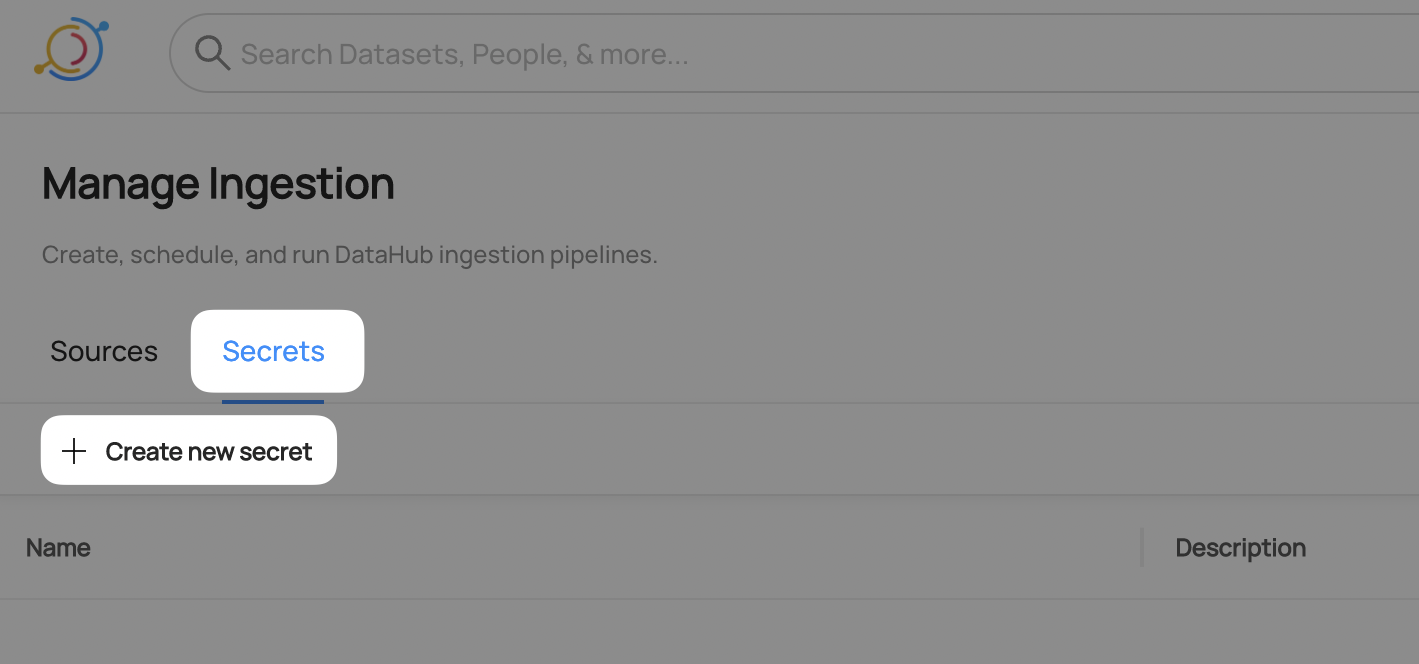
3. Create a client id secret
This will securely store your PowerBI `Application (client) ID` within DataHub
- Enter a name like `POWER_BI_CLIENT_ID` - we will use this later to refer to the `Application (client) ID`
- Enter the `Application (client) ID`
- Optionally add a description
- Click **Create**
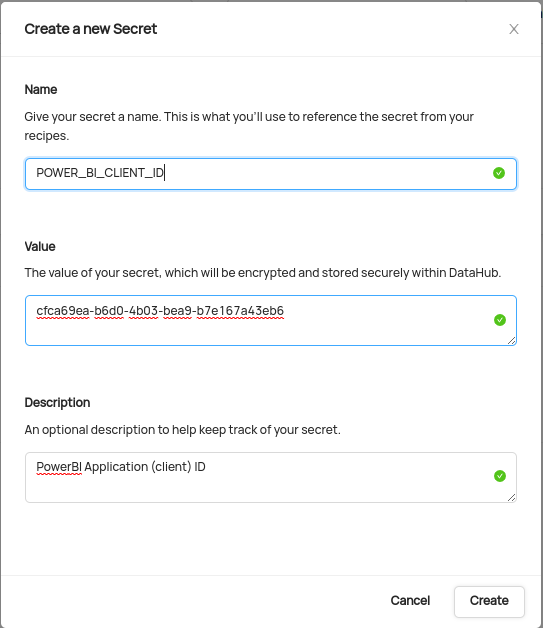
4. Create a secret to store the Azure AD Client Secret
This will securely store your client secret"
- Enter a name like `POWER_BI_CLIENT_SECRET` - we will use this later to refer to the client secret
- Enter the client secret
- Optionally add a description
- Click **Create**
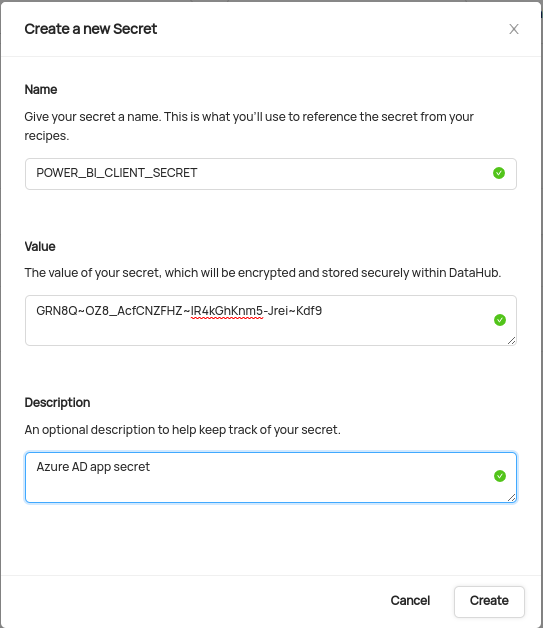
## Configure Recipe
1. Navigate to the **Sources** tab and click **Create new source**
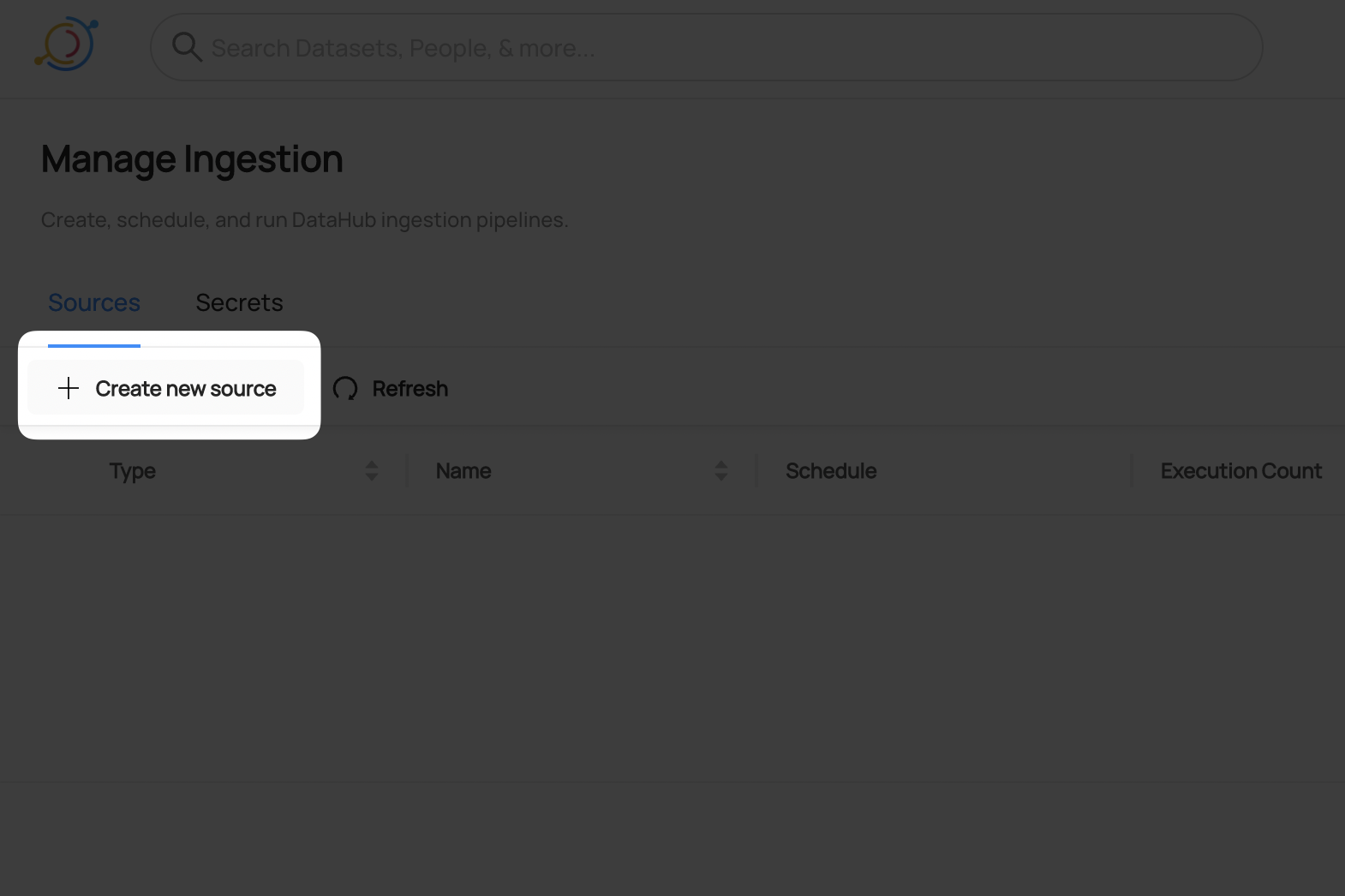
2. Choose PowerBI
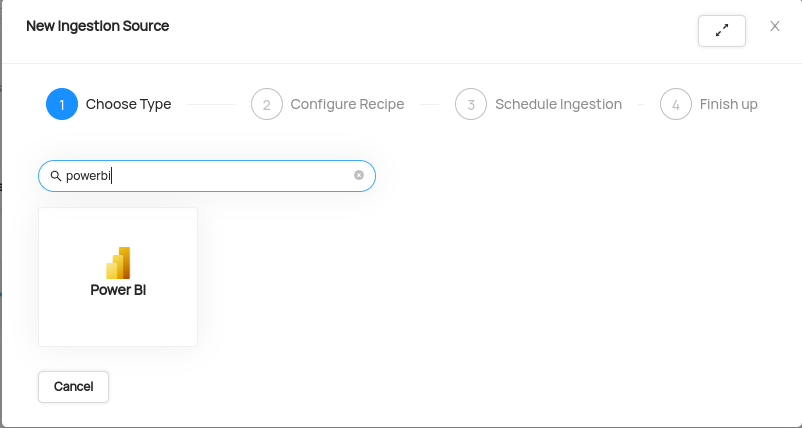
3. Enter details into the PowerBI Recipe
You need to set minimum 3 field in the recipe:
a. **tenant_id:** This is the unique identifier (GUID) of the Azure Active Directory instance. Tenant Id can be found at: PowerBI Portal -> Click on `?` at top-right corner -> Click on `About PowerBI`
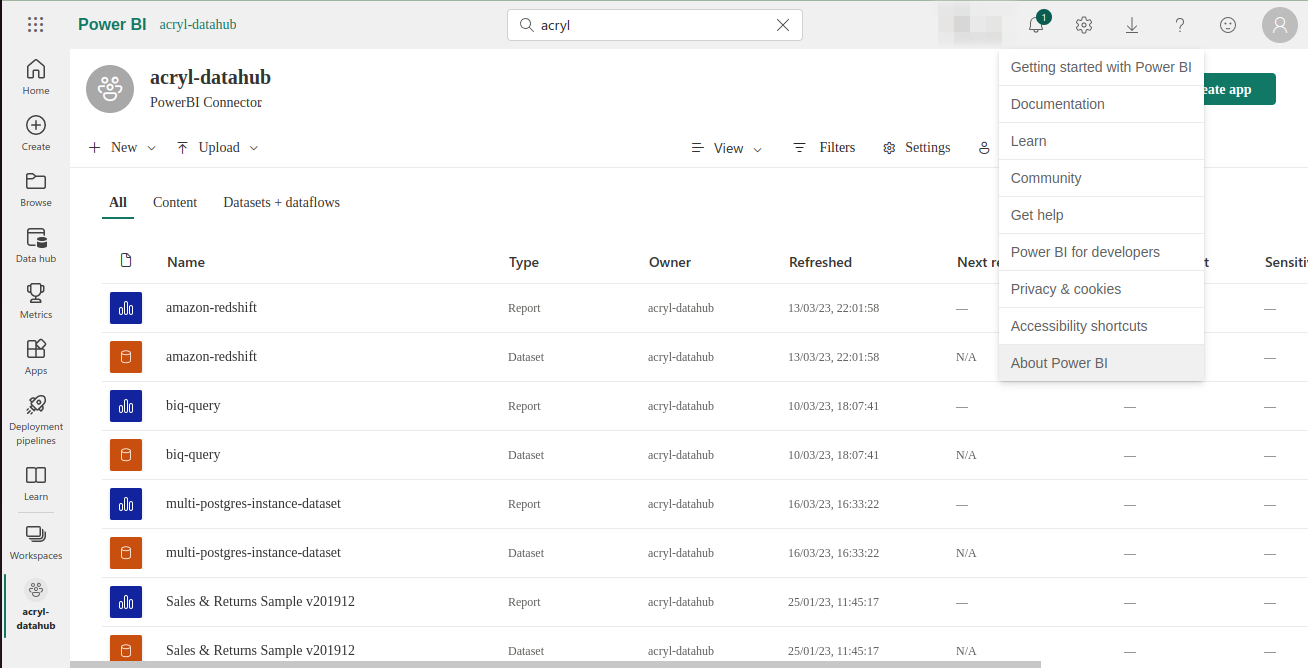
On `About PowerBI` window copy `ctid`:
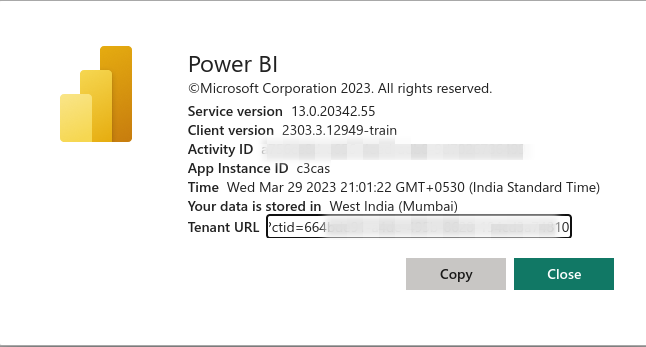
b. **client_id:** Use the secret POWER_BI_CLIENT_ID with the format "${POWER_BI_CLIENT_ID}".
c. **client_secret:** Use the secret POWER_BI_CLIENT_SECRET with the format "${POWER_BI_CLIENT_SECRET}".
Optionally, use the `workspace_id_pattern` field to filter for specific workspaces.
config:
...
workspace_id_pattern:
allow:
- "258829b1-82b1-4bdb-b9fb-6722c718bbd3"
Your recipe should look something like this:
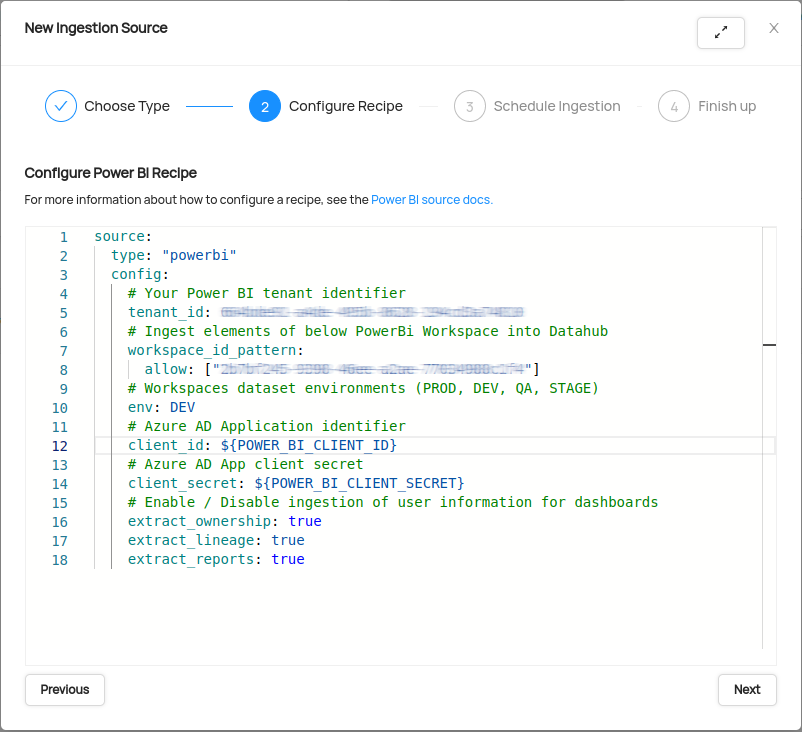
After completing the recipe, click **Next**.
## Schedule Execution
Now it's time to schedule a recurring ingestion pipeline to regularly extract metadata from your PowerBI instance.
1. Decide how regularly you want this ingestion to run-- day, month, year, hour, minute, etc. Select from the dropdown
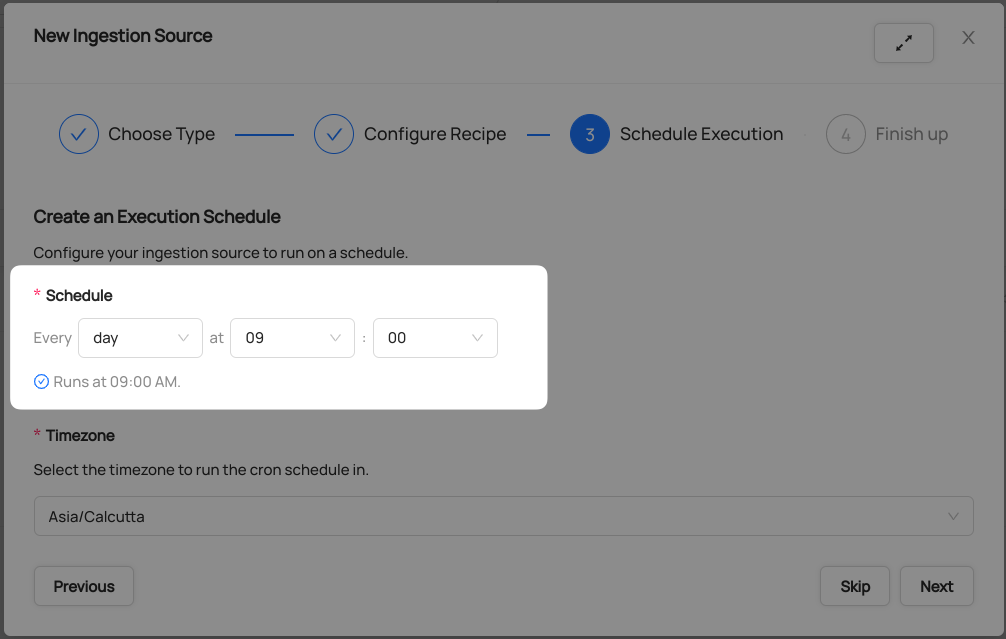
2. Ensure you've configured your correct timezone
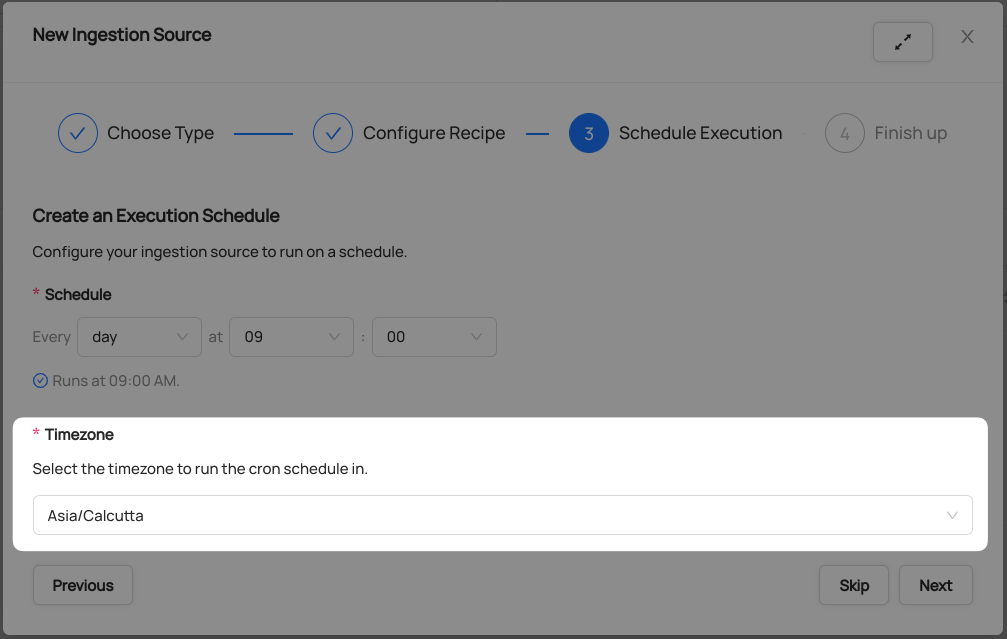
3. Click **Next** when you are done
## Finish Up
1. Name your ingestion source, then click **Save and Run**
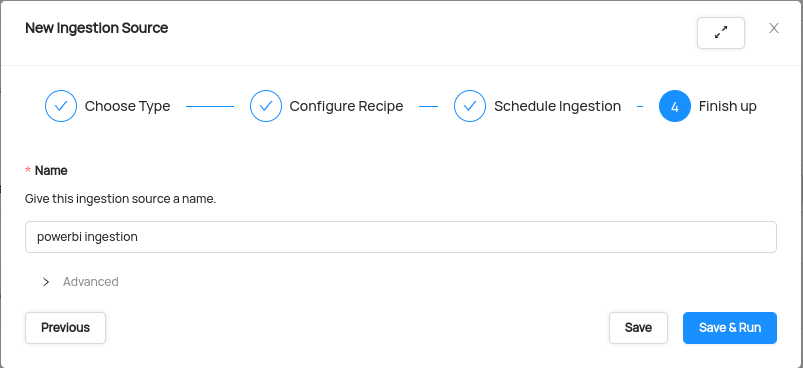
You will now find your new ingestion source running
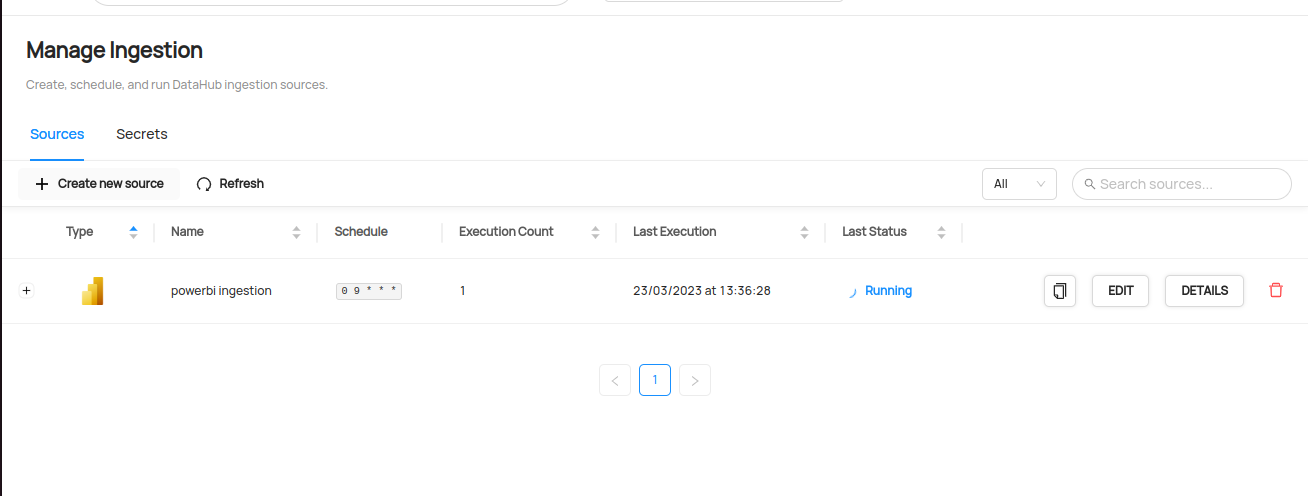
## Validate Ingestion Runs
1. View the latest status of ingestion runs on the Ingestion page
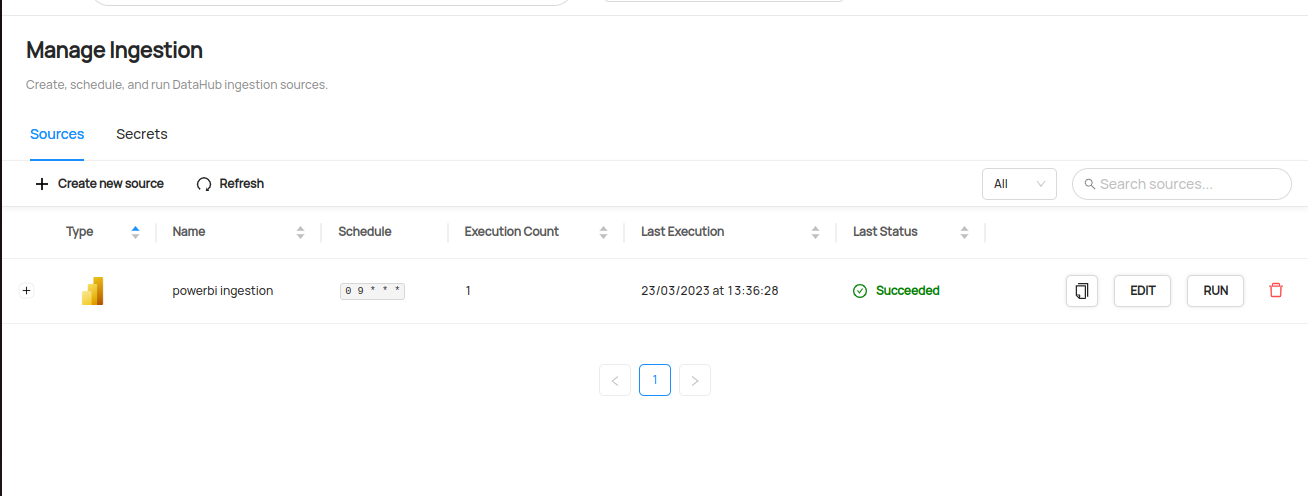
2. Click the plus sign to expand the full list of historical runs and outcomes; click **Details** to see the outcomes of a specific run

3. From the Ingestion Run Details page, pick **View All** to see which entities were ingested
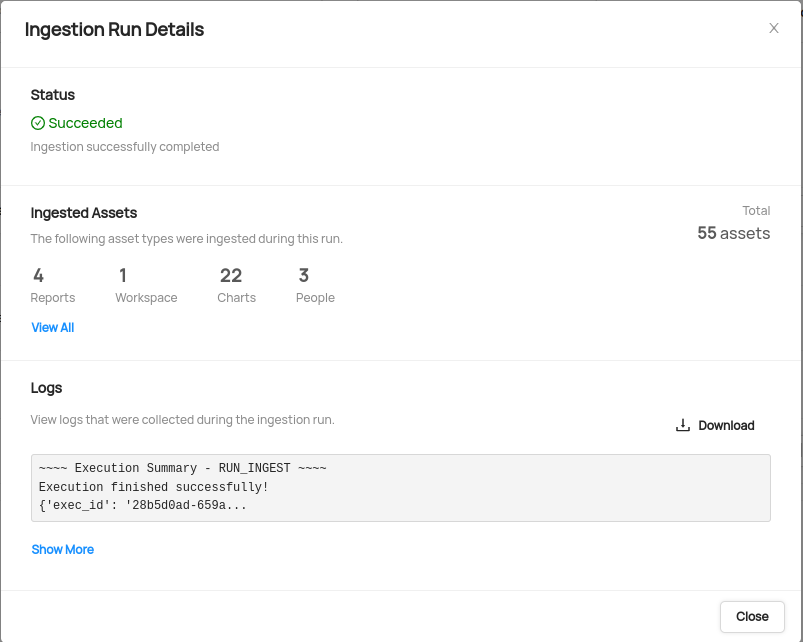
4. Pick an entity from the list to manually validate if it contains the detail you expected
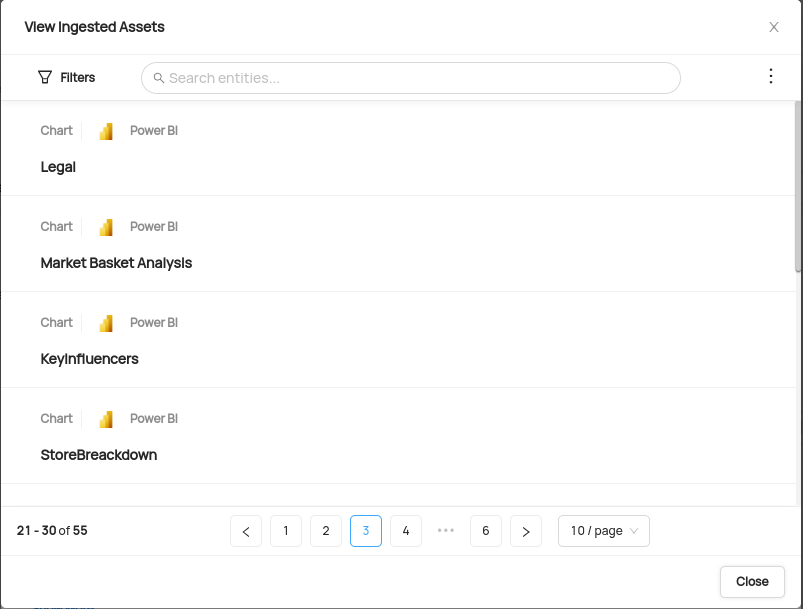
**Congratulations!** You've successfully set up PowerBI as an ingestion source for DataHub!

















